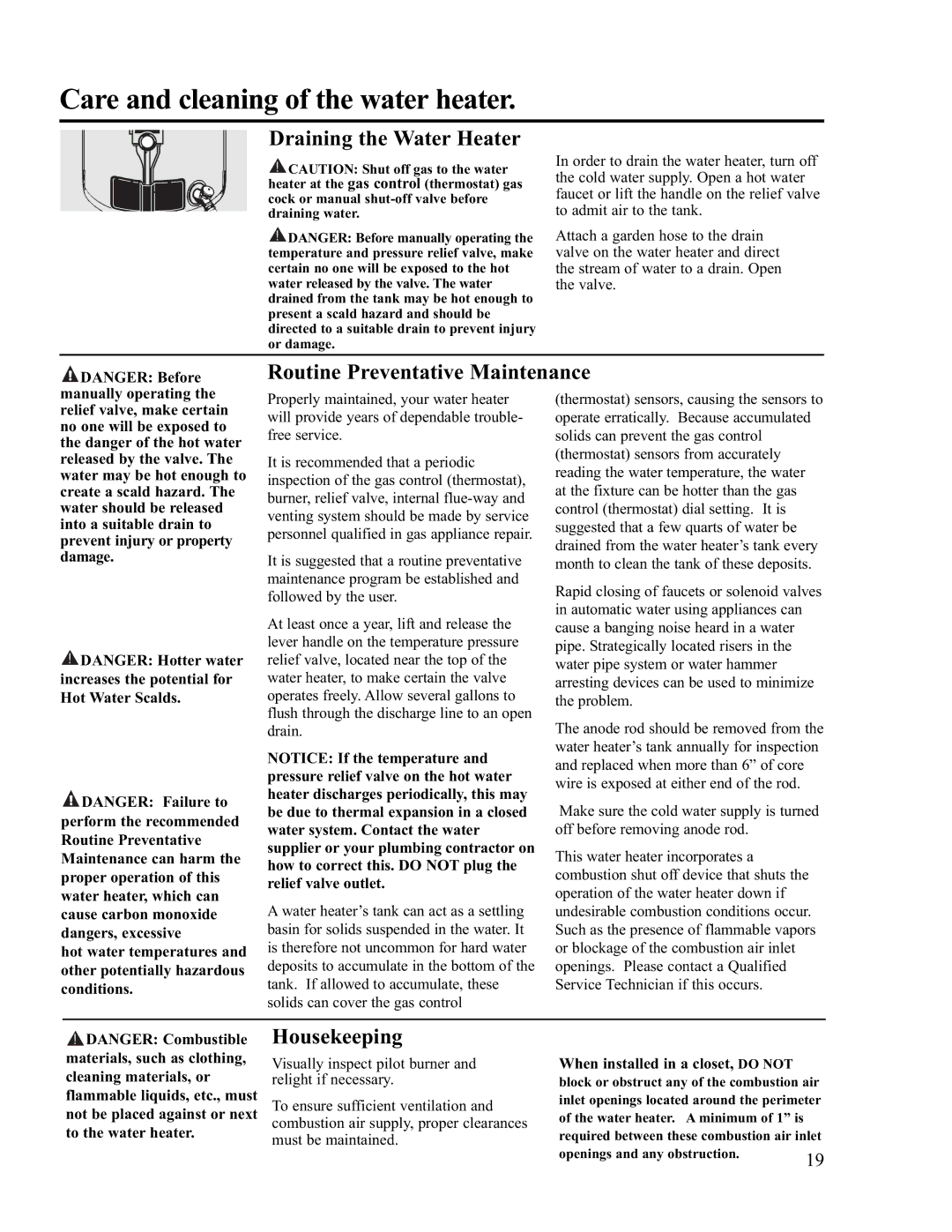PVR50-80 (NAT) specifications
The Rheem PVR50-80 (NAT) is a premium hot water system designed for households with high demands for hot water. Known for its reliability and efficiency, this model offers a perfect blend of innovative technology and user-friendly features, making it a great choice for both residential builders and homeowners.One of the standout features of the Rheem PVR50-80 is its 5-star energy efficiency rating, which is made possible by the unit’s advanced heating technology. This system utilizes a gas-fired water heater with a robust 80-litre storage capacity, making it an excellent option for families with varying hot water needs. With a maximum temperature of 75 degrees Celsius, it provides ample hot water for showers, baths, and household chores, ensuring that your family will never run out.
Rheem has integrated various technologies into the PVR50-80 to enhance its performance and reliability. The unit features a reliable temperature control system that allows users to set the desired water temperature accurately. This ensures consistent temperature delivery while minimizing energy consumption and waste. Additionally, the model is equipped with a durable vitreous enamel tank, which is designed to prevent corrosion and enhance the lifespan of the water heater.
The Rheem PVR50-80 also comes with an electronic ignition system that ensures easy and safe start-up every time. This feature eliminates the need for continuous pilot lighting, leading to improved energy efficiency. Moreover, the heater includes a variety of safety features, such as a temperature-pressure relief valve, which provides peace of mind for homeowners.
Another notable characteristic of this hot water system is its compact design, allowing for flexible installation in various spaces, including tight spots in homes. The unit is compatible with both natural gas and LPG systems, making it versatile for different household setups.
Rheem stands out in the market not only for producing efficient and powerful water heaters but also for their focus on quality and durability. The PVR50-80 (NAT) is backed by an extensive warranty, reflecting the manufacturer’s confidence in its product quality.
In conclusion, the Rheem PVR50-80 (NAT) is a powerful, efficient, and reliable choice for any household that requires a steady supply of hot water. With its advanced features, durable construction, and user-friendly operation, it remains a popular option in the competitive market of hot water solutions.

